
10 minute read
Arapaima: The Rewa Rodeo
We followed the bubble trail in the murky water in the hope of seeing the giant fish resurface. It had rolled once before. Just out of reach. Rovin lined up the boat with where we last saw it and then we waited. It wasn’t long before the 7ft shape reappeared in front of us. A massive head broke the surface as the fish took a gulp of air, its serpentine body followed as it rolled back down. It disappeared as quickly as it came up, but we could still see the faint line of bubbles as it cruised off. I laid a cast out over the furthest bubbles. I let the fly sink and began the slow strip. There was no interest.
By JOHANN DU PREEZ
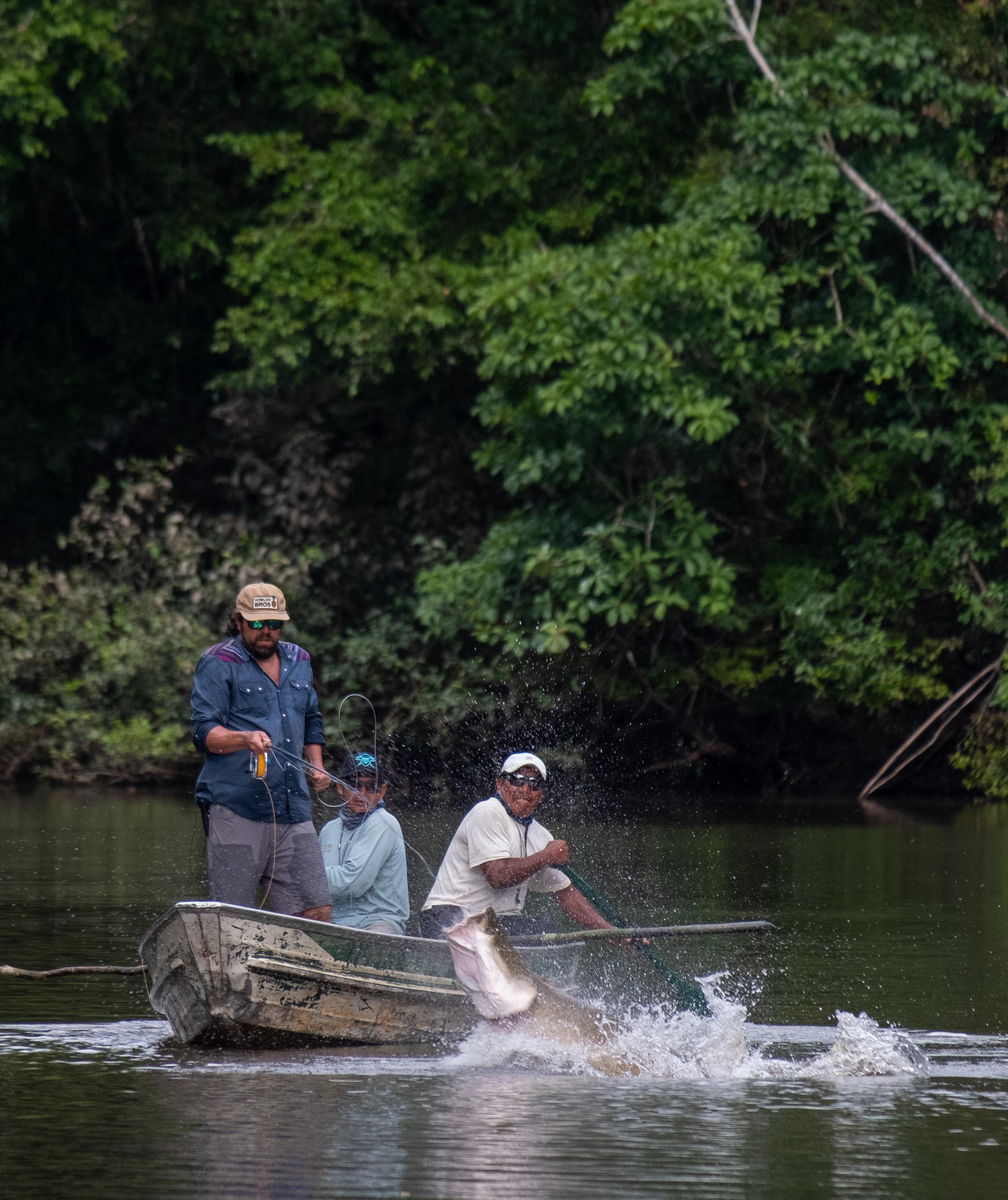
I picked up the line to make another cast, but by now all sings of the fish had disappeared. I took a shot in the dark. I placed the second cast a little beyond where I though the fish would be, and I let the fly sink.
“Wait, wait…wait… now strip slow” was the command from Rovin who was at the back of the boat. Anticipation was building and each strip felt like an eternity. The line was slowly gliding over my fingers and that is when I felt the solid thump. “Strip! Strip! Strip!” Rovin shouted from the back. I tightened my grip and began to set the hook with a series of violent strip-strikes. “Hit him again!” Rovin shouted with even more intensity. I kept setting the hook until the arapaima swam off with such force that it ripped the line out of my clinched fist.

Fish on!
It left a wake that rocked the boat, but it did not jump. It was then that we realized that it was a much bigger fish on the end of my line. We went back and forth for a minute or two before the fish decided it was time to show itself. It erupted from the water with incredible force. Spraying water and half-digested baitfish in all directions as it shook its head violently from side to side. It came crashing down and swam off again, tearing line from my reel. Rovin and I knew we had bitten off more than we can chew. What is normally a four-man task was now left to the two of us.

Eventually we managed to get the fish closer to the bank. Rovin jumped into the pond and grabbed the leader. For a moment he had a grip on the fish, but it burst free from his arms. By now Rovin was chest deep in the water, trying to get a handle on the giant fish. There was nobody to manage the boat and we kept getting pulled in deeper.
Rovin pushed the boat back towards the bank until we were tight against the trees. I shuffled to the back of the boat and grabbed on to the closest branch of a small tree. Now I was stuck in an awkward position; with rod in one hand connected to furiously bucking animal and the other holding on to the tree to keep the boat from getting pulled deeper into the pond.
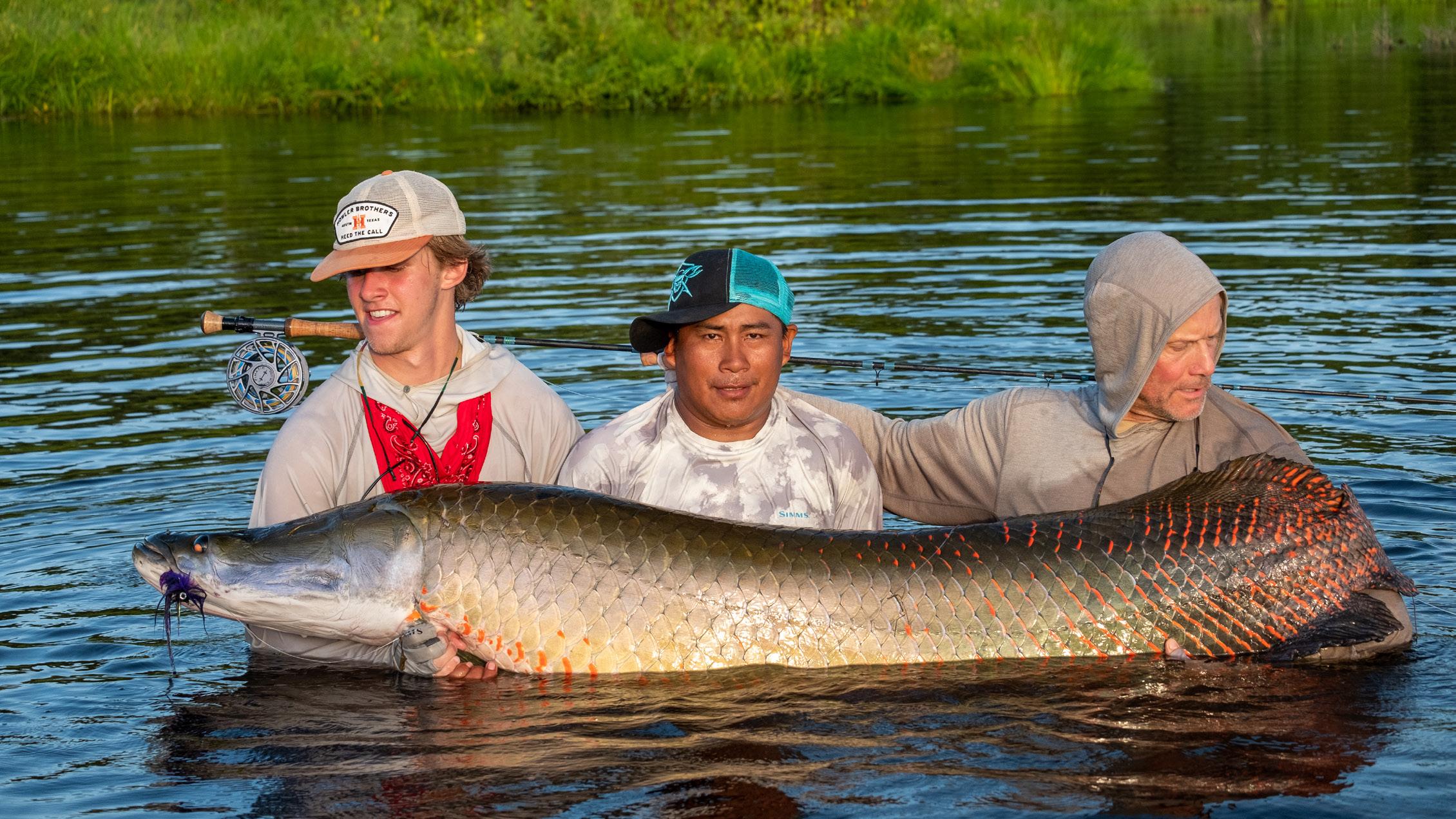

I could not hold on to the tree and get the fish under control. My only option was to clinch the rod between my legs, get a piece of rope and tie the boat down. It was a chaotic affair to say the least.

Screams of Joy Echo through the Jungle
After a few missed attempts I got the boat tied up properly. I got the rod back in my hands and then the tables began to turn in our favour again. By then the fish was probably just as exhausted as we were. About fifteen minutes hooking into this fish, Rovin finally got her in his grasp. Screams of joy echoed through the jungle. It was a true giant, measuring 210 centimetres from tip to tail. This was the biggest fish I had ever landed.

All the blood and sweat was worth it and now I fully understood what the Rewa Rodeo was all about. We all took a well-deserved rest, gave the fish time to recover and take a few necessary breaths before she kicked off into the murky water. Every time I think about that fish; I am reminded just how special the Rewa River is.
What is more impressive than the fact that you can catch a 2m+ fish on fly is the story of how these fish were saved by the people of the Rewa Village.



On the Brink of Extinction
Arapaima are the world’s largest scaled freshwater fish and indigenous to the Rupunini River system in Guyana. They are beautiful fish with intricately marked heads. They have large olive-coloured scales with vivid red striping across their tails. These beautiful scales and skins became sought-after at exotic trade markets in Brazil. The extremely tough arapaima skins were also used to make exotic leather products such as cowboy boots.
Although their skins were a valuable commodity, they were mostly wanted for their meat. Arapaima have firm white flesh making it a popular freshwater table-fish. All this sparked the wide-spread harvesting of arapaima. To make matters worse these fish become extremely vulnerable during the dry season when they get trapped in small ponds and oxbow lakes in the jungle. During these low water months, the fish could easily be netted or shot. This made arapaima a soft target for poachers and in the 1980’s they were harvested to the brink of extinction.
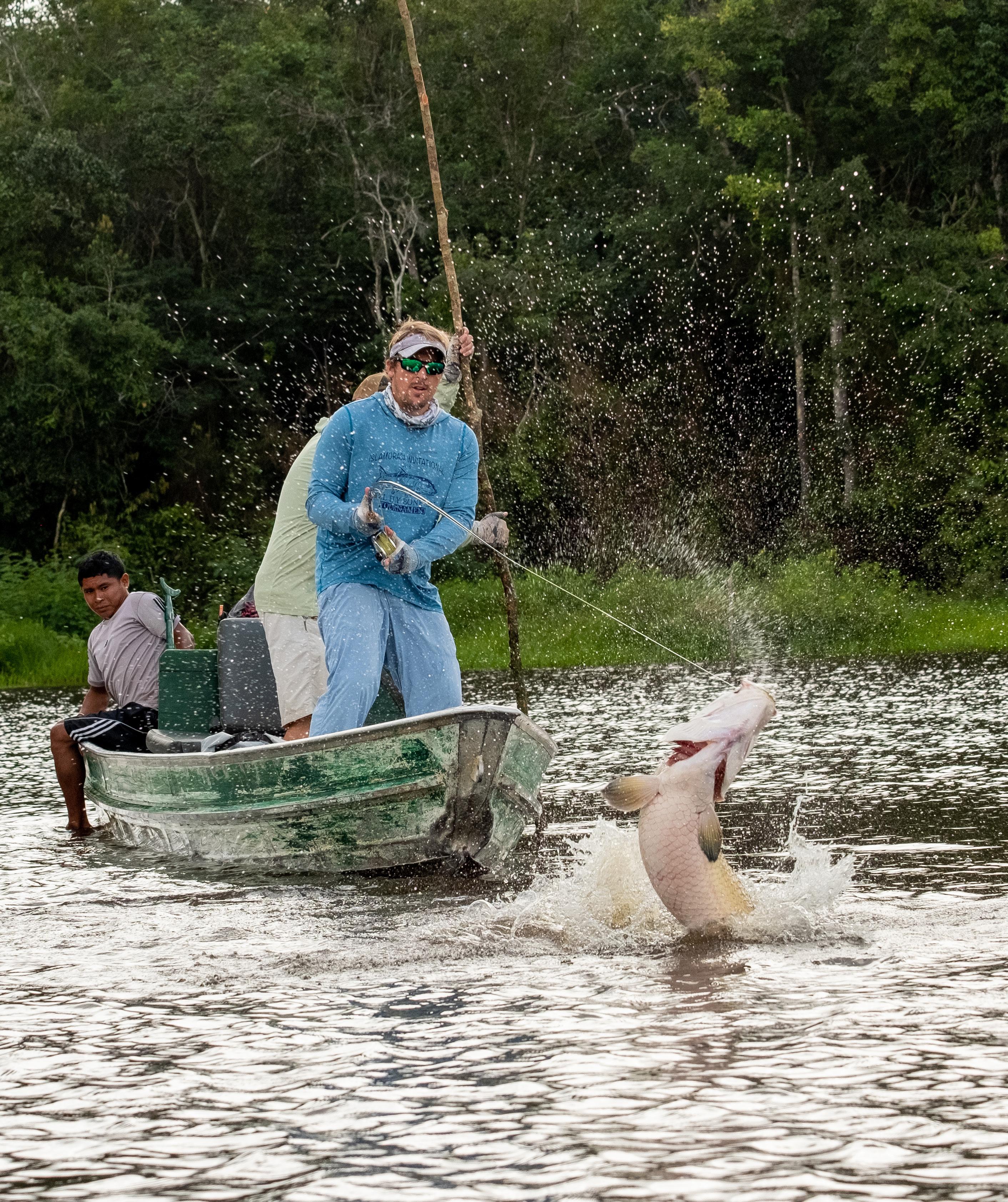
In the late 1990’s arapaima were so scarce that the village of Rewa decided that something had to be done. Arapaima numbers were getting so low that harvesting was no longer feasible. They took the initiative to stop killing these fish and instead to protect them. Along with the protection of arapaima they initiated the protection of all the other wildlife in the rainforest.
With the help of Conservation International (CI), in 2005 the Rewa community founded an Eco-lodge, a first of its kind in Guyana. The killing of arapaima became illegal and today across Guyana they are being protected. Not only did this save arapaima from extinction, but it also re-established balance in the eco-system. The number of giant river otters has risen as well as the number of black caimans.
There are multitudes of monkeys and other small mammals to be seen and even the bird numbers have been rising steadily since the intervention.
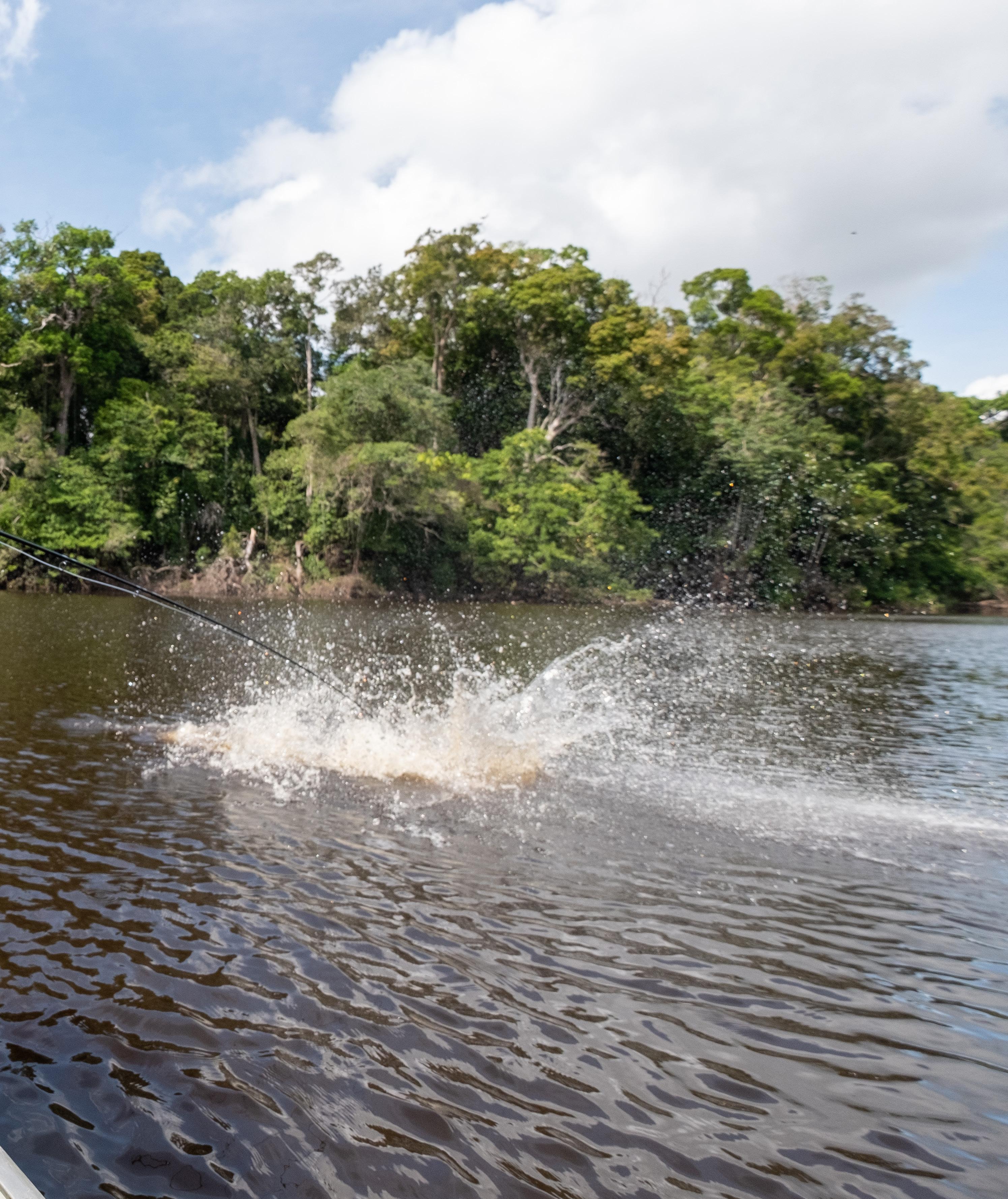
The Rewa Eco-Lodge
About five years after the eco-lodge was established, Oliver White along with a few Indifly members did the first exploratory trips into the jungle. Their goal was to catch arapaima on fly. After many trials they managed to land their first arapaima at the Rewa Eco-Lodge. This set into motion a partnership that would take Rewa to the next level and put arapaima fishing on the map. Since then, arapaima sport fishing has grown in popularity and today the Rewa Eco-lodge is a world-renowned fly-fishing destination. Not only is it a phenomenal arapaima fishery, but it offers a wide variety of species to target on fly. From peacock bass to payara and arowana there is never a dull moment.

There is more to this story than simply great fishing. The involvement of Indifly has been beneficial not only for the fish, but also for the people of Rewa. People like Matt Breuer has put in years of work with Rewa to establish a strong foundation to build on. Indifly’s goal is to empower the people of Rewa to the point where they can drive the entire lodge and fishing program on their own. Indifly also brought a science team that spent countless hours researching these arapaima.
They began a tagging program that is still ongoing today. This has given us great insight into the life of arapaima, from how quickly they grow to how far they travel and how they breed. We also now have a much better understanding of how to revive and release these fish successfully. The current known mortally rate of caught arapaima before release is around 1%, this is incredible considering how fragile these fish can be. Each fish is treated with tremendous care. Once a fish is captured it is fitted with a pit-tag, this tells us if a fish has been caught before or not.
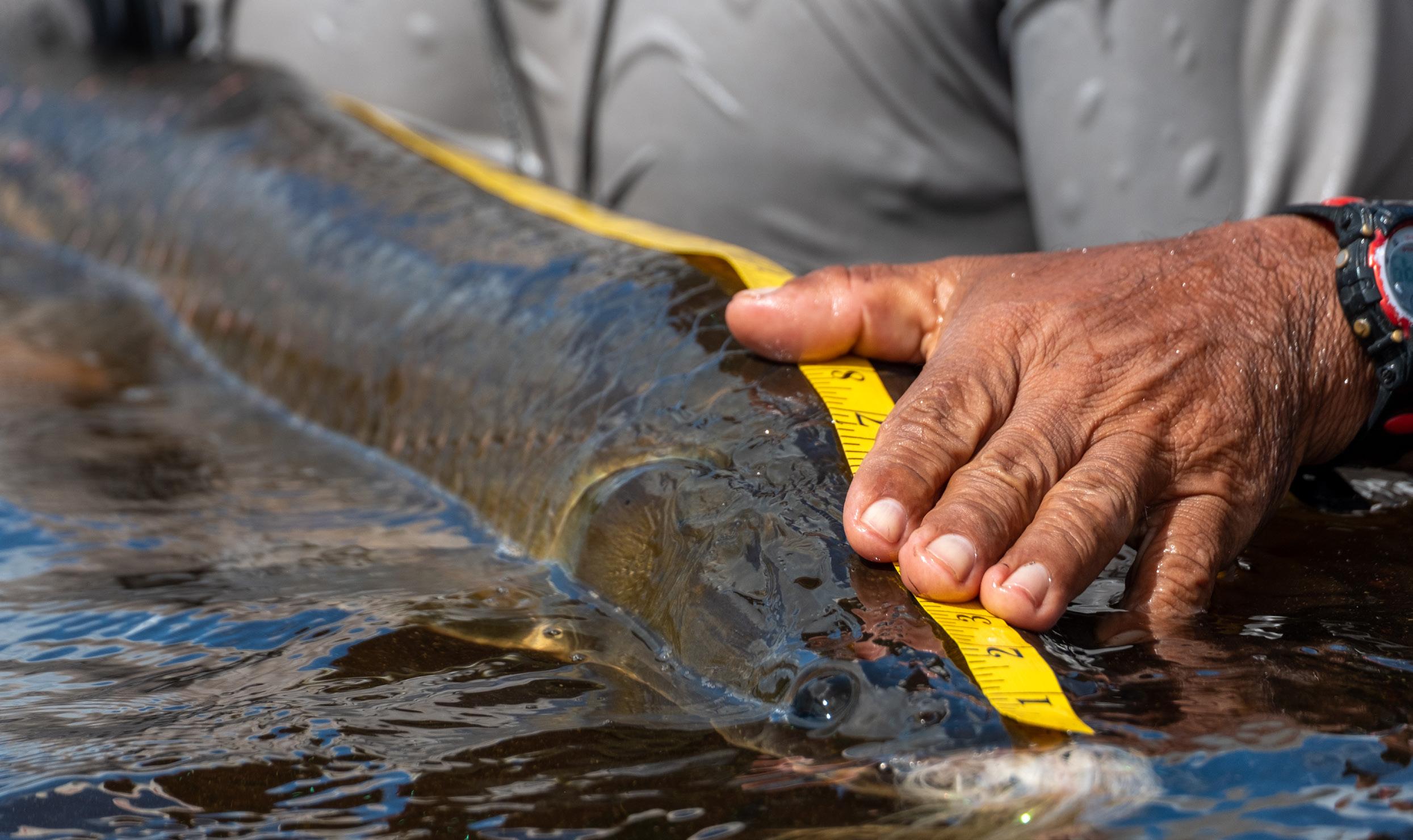
Sustainable Fishing Practices
Each fish is measured in length and girth and all this data is recorded, along with where the fish was caught and by whom it was caught.



Even more important than the pit-tag data, is how the fish are revived. Depending on their size a fish will be allowed to take two to three breaths of air before being released. Two or three men will cradle the fish just below the surface; this allows the tired fish to lift its head out the water to take these much-needed gulps of air. The fish will be held like this for as long as it takes the fish to revive.

Before being released, each fish is also fitted with a brightly coloured bobber on a 10ft line. The line is connected to the fish with an elastic band that can be pulled off the fish once it has fully recovered. When the fish is released the research team can now easily track the movement of the fish. The science team will follow the bobber around and count each time it comes up for a breath. If the fish fails to come up, they can locate it and intervene, although it is hardly ever necessary. A fish is followed for 45-60 minutes before the bobber is pulled off.
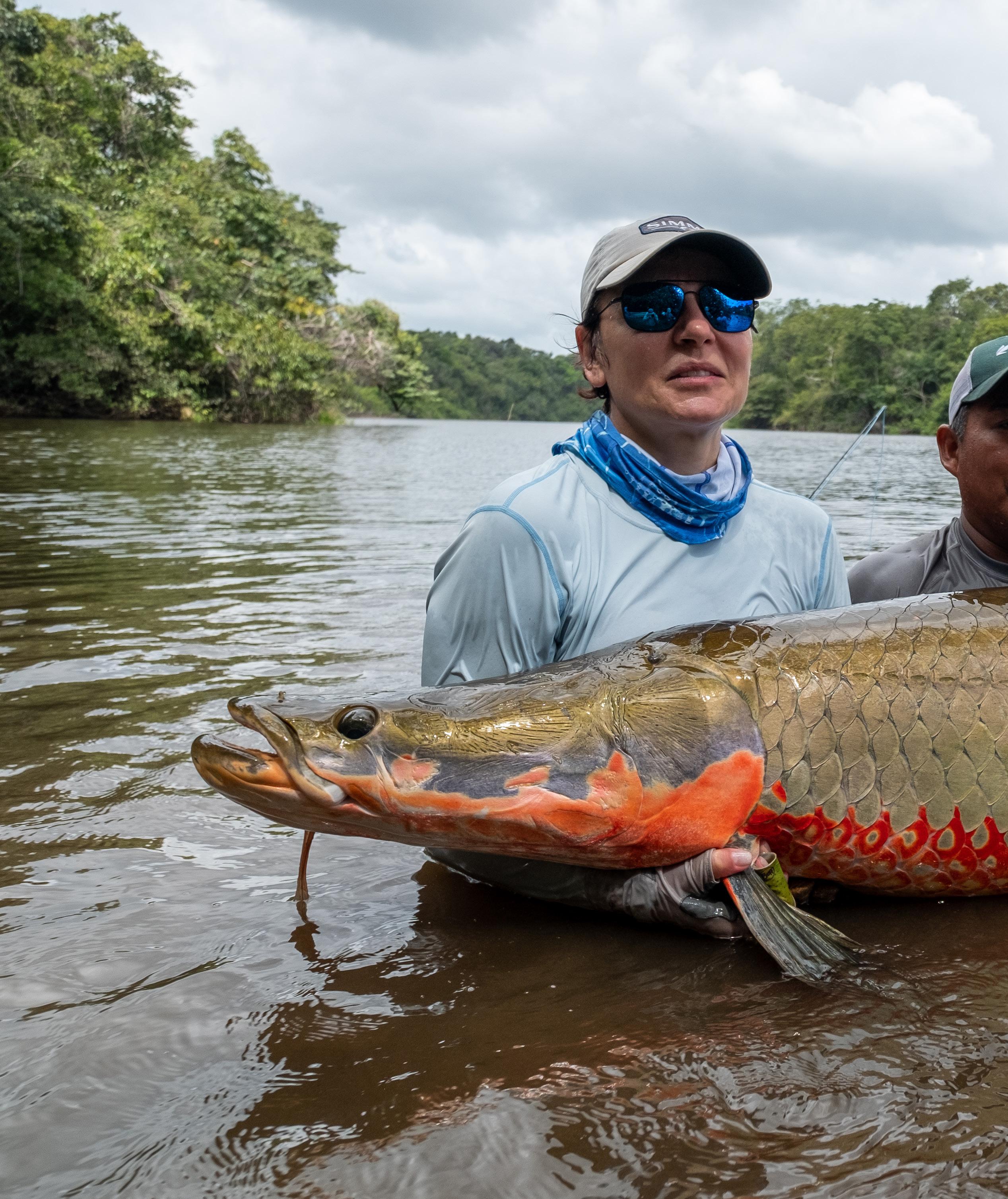
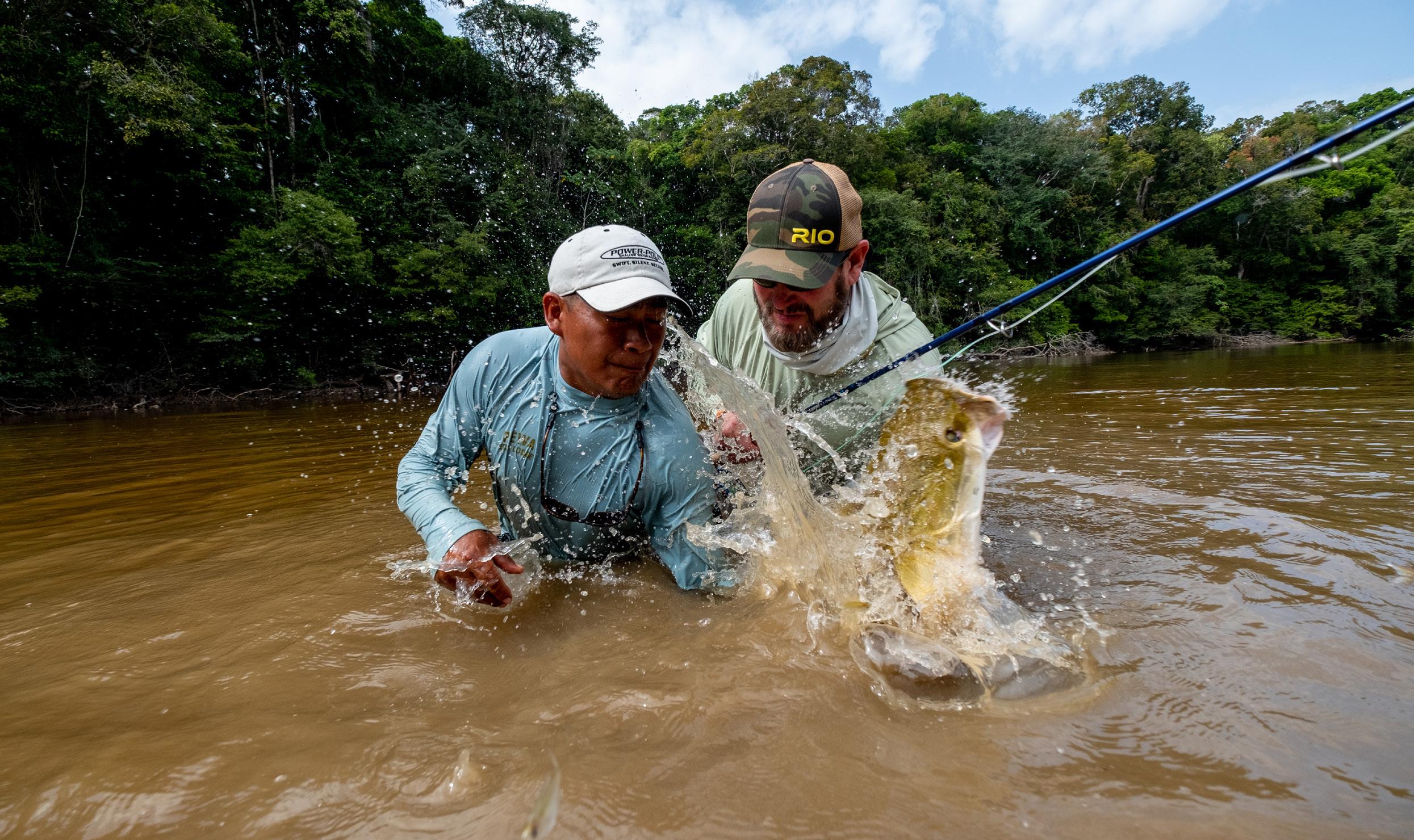
This labour-intensive procedure ensures that the fish are released in good health. They will even defend the fish against black caiman if they try to snatch the recovering fish.
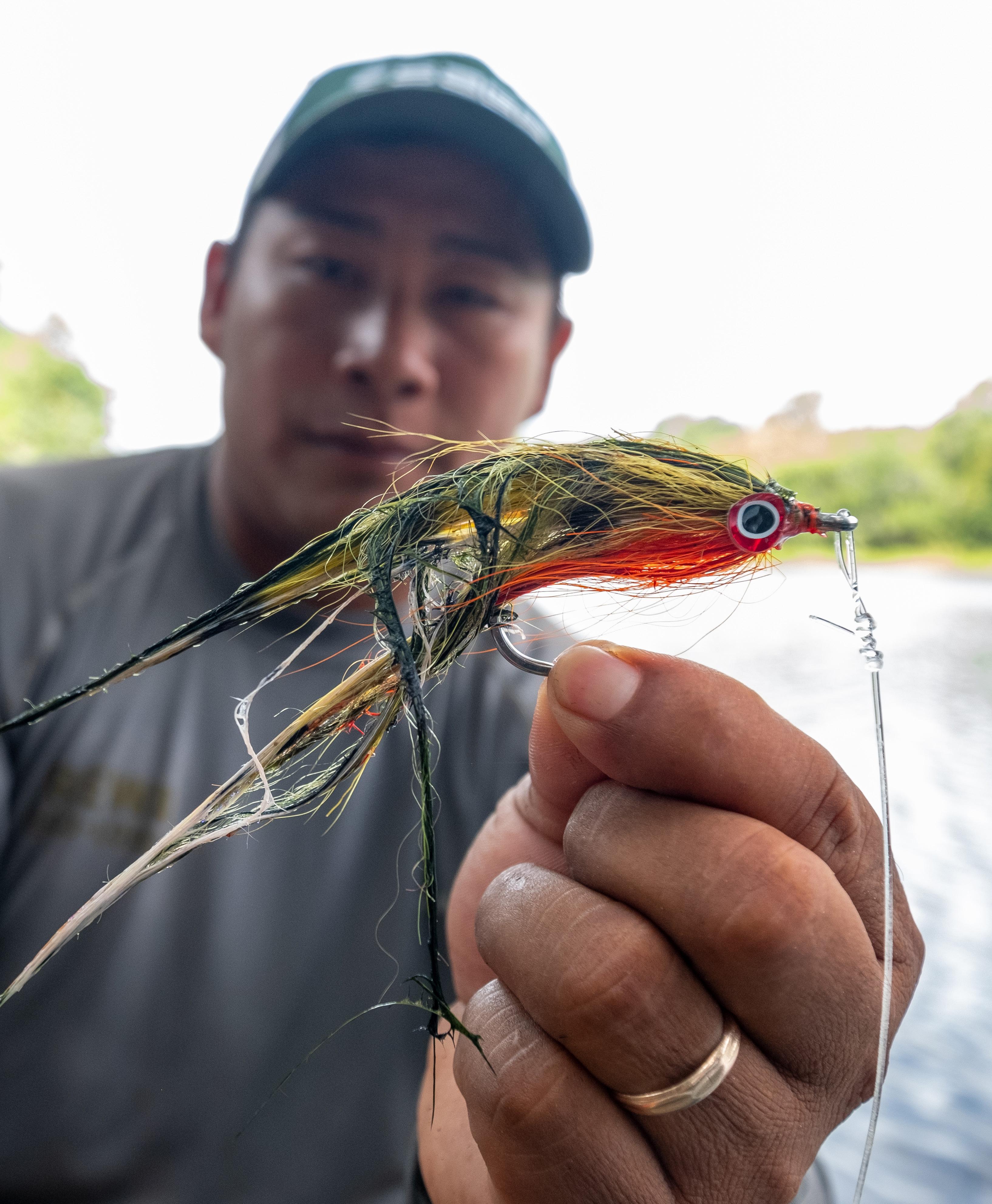
All the knowledge that has been gathered over the years has been passed over to the local research team at Rewa. One of the heroes of this story is Winston Edwards, a man who used to hunt arapaima for a living, is now one of their greatest guardians.
Winston is the head arapaima researcher at Rewa and is responsible for the tagging and recording of all data on these fish. His passion for arapaima conservation is remarkable and inspiring.


Winston is just one of many passionate people who work at the eco-lodge. Everybody, from the cleaning staff to the world-class guides are loyal to the lodge. The Rewa Eco-Lodge has given purpose to this small village in the jungle, but what they have given back to conserve the natural world is far greater than that.










